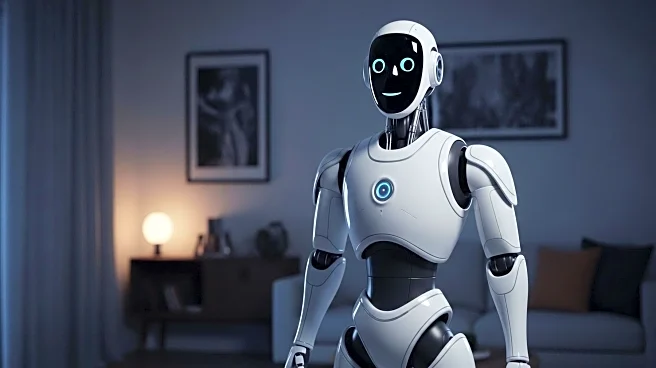What's Happening?
The robotics industry is experiencing a surge in interest and investment in humanoid robots, with companies like Figure AI, Tesla, and 1X Technologies leading the charge. These companies envision humanoid robots as potential assistants in homes, capable of performing tasks such as folding laundry, making coffee, and caring for the elderly. Despite the enthusiasm from investors, a study conducted by researchers at the University of Washington reveals mixed public sentiment towards humanoid robots in domestic settings. Participants in the study expressed concerns about safety, privacy, and the practicality of humanoid robots, preferring specialized robots for specific tasks. The study highlights a disconnect between the industry's vision and consumer preferences, as many people find humanoid robots unsettling and impractical for home use.
Why It's Important?
The push for humanoid robots in homes represents a significant shift in the robotics industry, with potential implications for labor markets and consumer technology. If successful, humanoid robots could address labor shortages in sectors like manufacturing and logistics, while also providing assistance in domestic settings. However, the public's skepticism suggests challenges in adoption, as safety and privacy concerns may hinder widespread acceptance. The industry's focus on humanoid robots could also impact the development of specialized robots, which are currently preferred by consumers for specific tasks. This divergence between industry goals and consumer preferences may influence future investment and innovation in robotics, shaping the trajectory of technological advancements in the sector.
What's Next?
As the robotics industry continues to invest in humanoid robots, companies may need to address public concerns to facilitate adoption. This could involve enhancing safety features, ensuring privacy protections, and demonstrating the practical benefits of humanoid robots in homes. Additionally, further research and development may be required to align robot designs with consumer preferences, potentially leading to more specialized robots for specific tasks. The industry's response to public skepticism will likely influence the pace and direction of humanoid robot integration into domestic settings, with potential implications for regulatory frameworks and market dynamics.
Beyond the Headlines
The exploration of humanoid robots in homes raises ethical and cultural questions about the role of technology in daily life. The potential for robots to replace human caregivers or perform intimate tasks may challenge societal norms and expectations, prompting discussions about the balance between technological convenience and human interaction. Additionally, the development of humanoid robots could impact employment patterns, as automation may alter job availability and skill requirements in various sectors. These broader implications highlight the need for thoughtful consideration of the societal impact of robotics advancements.













